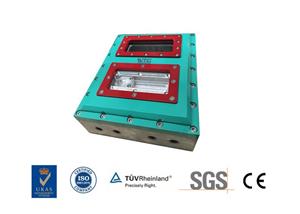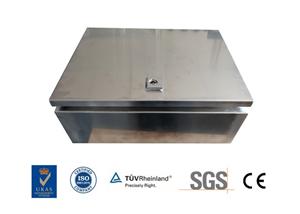machine design(一)
1
Design classification
Mechanical design can be divided into three types: new design, inherited design and variant design.
1. New design
Apply mature science and technology or new technologies that have been proved to be feasible through experiments, and design new machines that have not been in the past.
2. Inheriting the design
According to the use experience and technical development, the existing machinery is updated to improve its performance, reduce its manufacturing cost or reduce its operating cost.
3. Variant design
In order to adapt to the new needs, the existing machinery is partially modified or added or deleted, and a variant product different from the standard type is developed.
2
Main process
1. Formulate design tasks based on customer needs, market needs, and new scientific research achievements.
2. Preliminary design. Including determining the working principle and basic structural form of the machine, performing motion design, structural design and drawing a preliminary general plan and preliminary review.
3. Technical design. Including modification of the design (according to the opinions of the preliminary review), drawing all the parts and the new general plan, and the second review.
4. Work drawing design. Including the final modification (according to the opinion of the second review), drawing all the work drawings (such as part drawings, assembly drawings and general assembly drawings, etc.), and formulating all technical documents (such as parts list, wearing parts list, instructions for use, etc.).
5. Stereotype design. Machinery for batch or mass production. For some design tasks that are relatively simple (such as new design of simple machinery, inherited design or variant design of general machinery, etc.), preliminary design procedures can be omitted.
3
design phase
The quality of a machine basically depends on the design quality. The effect of the manufacturing process on the quality of the machine is essentially to achieve the quality specified in the design. Therefore, the design stage of the machine is the key to determine the quality of the machine.
The design process in question refers only to a narrow technical design process. It is a creative work process, and it is also a work that makes full use of the existing successful experience as much as possible. Only by combining inheritance and innovation can we design high-quality machines. As a complete machine, it is a complex system
(1) Planning
In the planning stage, make full investigation and analysis of the needs of the designed machine (editor's note: such as carefully studying the needs of the customer and providing relevant information, repeatedly communicating with the customer to clarify the customer's ideas and intentions, etc.), through Analyze to further clarify the functions that the machine should have, and put forward the constraints determined by the environment, economy, processing and time limit for future decision-making. On this basis, clearly write out the overall requirements and details of the design task, and finally form the design task book as a summary of this stage.
The design task book should generally include: the machine's function, economic and environmental protection estimates, manufacturing requirements in general estimates, basic use requirements, and the expected deadline for completing the design tasks. At this time, these requirements and conditions generally can only give a reasonable range, rather than accurate figures. For example, it can be determined by the requirements that must be met, the minimum requirements, and the requirements that you want to achieve.
(2) Scheme design
According to different working principles, it is possible to draw up a variety of specific implementation agencies. For example, in the case of thread cutting only, the workpiece can only be rotated and the tool can be linearly moved to cut the thread (such as cutting the thread on a common lathe), or the tool can be rotated and moved to cut the thread without moving the workpiece ( For example, use a die to process threads). This means that even for the same working principle, there may be several different structural solutions.
In the plan design stage, the relationship between reference and innovation must be properly handled. The precedents for the success of similar machines should be used for reference, and the original weak links and parts that do not meet the requirements of existing tasks should be improved or fundamentally changed. It is necessary to actively innovate, oppose conservatism and copy the original design, and oppose these two erroneous tendencies of blindly seeking novelty and discarding reasonable original experience.
(3) Technical design
The goal of the technical design stage is to produce general assembly sketches and component assembly sketches. Determine the outline and basic dimensions of each component and its parts through sketch design, including the connection between each component, the outline and basic dimensions of the components Finally, draw the work drawings, assembly drawings and assembly drawings of the parts.
In order to determine the basic dimensions of the main parts, the following work must be done
(1) The kinematic design of the machine.
According to the determined structural scheme, determine the parameters of the moving parts (power, speed, linear speed, etc.). Then do kinematics calculations to determine the motion parameters (speed, speed, acceleration, etc.) of each moving component.
(2) Dynamic calculation of the machine.
Combine the structure and motion parameters of each part to calculate the magnitude and characteristics of the load on each main part. The load obtained at this time is only the nominal (or nominal) load acting on the part because the part has not been designed yet.
(3) Design of work ability of parts.
Knowing the size and characteristics of the nominal load on the main parts, the initial design of the components and parts can be done. The working capacity criteria on which the design is based must be reasonably drawn with reference to the general failure conditions of components, working characteristics, environmental conditions, etc. There are generally strength, stiffness, vibration stability, and life criteria. Through calculation or analogy, the basic dimensions of the parts and components can be determined.
(4) Design of component assembly sketches and general assembly sketches.
According to the basic dimensions of the main parts and components that have been determined, design assembly sketches and general assembly sketches. The outline and dimensions of all parts need to be structured on the sketch. In this step, the structure and size of each part need to be well coordinated, and the structural manufacturability of the designed parts and components must be fully considered so that all parts have the most reasonable configuration.
(5) Check of main parts.
There are some parts. In step (3) above, because the specific structure is undecided, it is difficult to perform detailed work capacity calculations, so only preliminary calculations and designs can be done. After drawing assembly sketches and general assembly sketches, the structure and dimensions of all parts are known, and the relationship between adjacent parts is also known. Only at this time can the load acting on the part be determined more accurately, and the various detail factors that affect the working ability of the part can be determined. Only under this condition is it possible and necessary to carry out accurate check calculations for some important or complicated parts with complicated shapes and stress conditions. According to the results of the verification, the structure and dimensions of the parts are modified repeatedly until satisfied.
In each step of technical design, the optimized design technology developed in the past three or four decades has increasingly shown its ability to achieve the best choice of structural parameters. Some new numerical calculation methods, such as the finite element method, etc., can make the previously difficult quantitative calculation problems obtain excellent approximate quantitative calculation results. For a few very important, complicated and expensive parts, the model test method must be used to design when necessary, that is, the model is made according to the preliminary design drawings, and the weak parts or redundant sections on the structure are found through the test According to the size, strengthen or reduce to modify the original design, and finally reach the perfect level. The mechanical reliability theory is used in the technical design stage. It can evaluate whether the designed components and parts structure and their parameters meet the reliability requirements from the perspective of reliability, and put forward suggestions for improving the design, thereby further improving the design quality of the machine. . These new design methods and concepts should be applied and promoted in the design so that they can be developed accordingly.
According to the structure and size on the final drawing of the part work drawing, redraw the assembly drawing and general assembly drawing. Through this work, you can check the size and structural errors that may be hidden in the part drawing. People call this work colloquially called assembly on paper.




